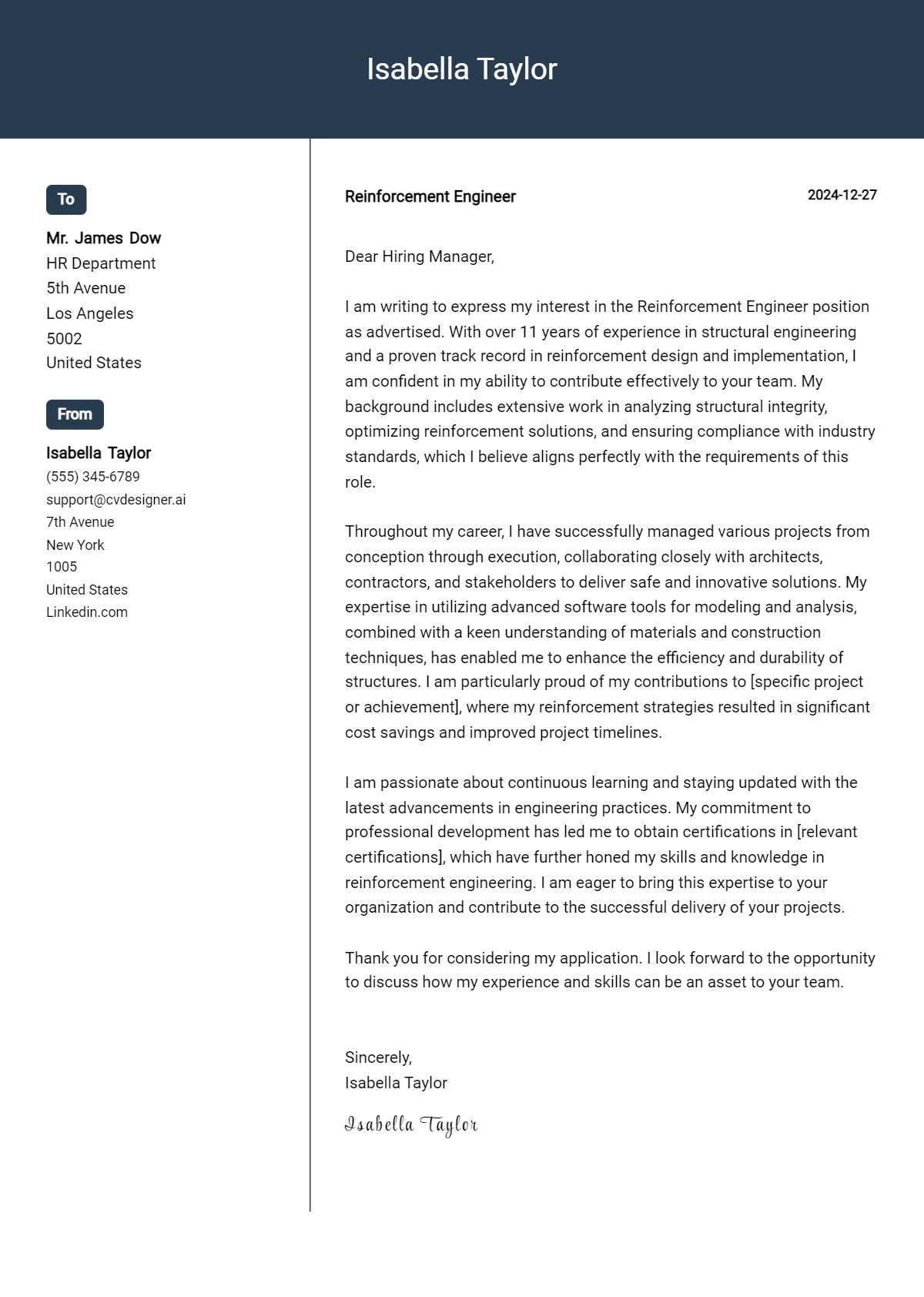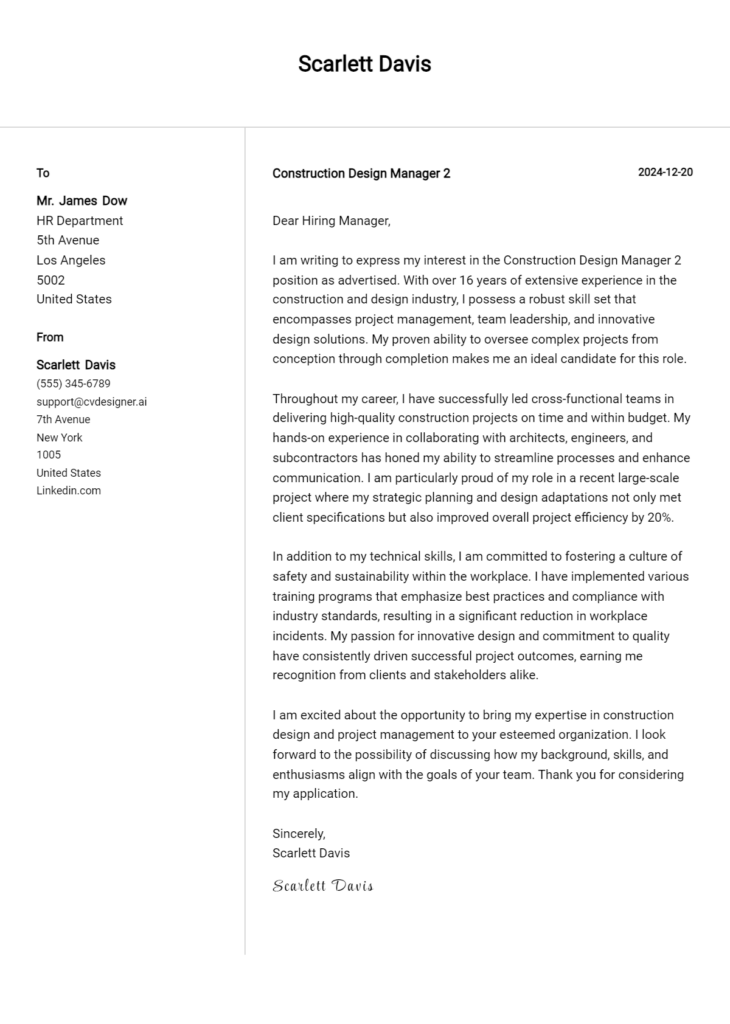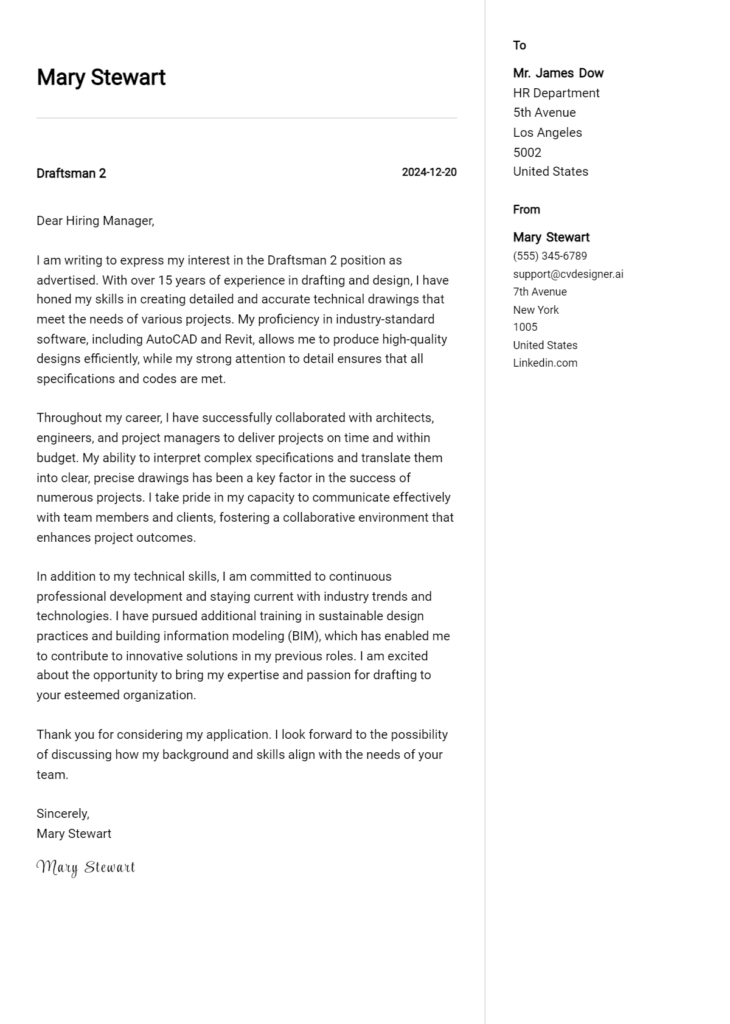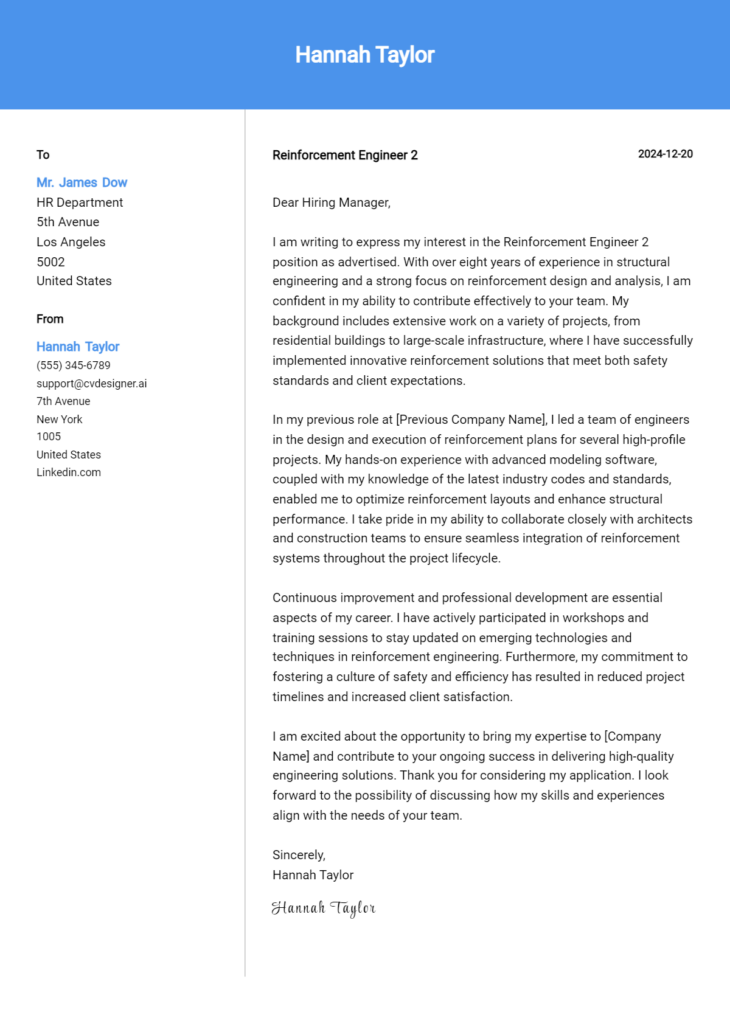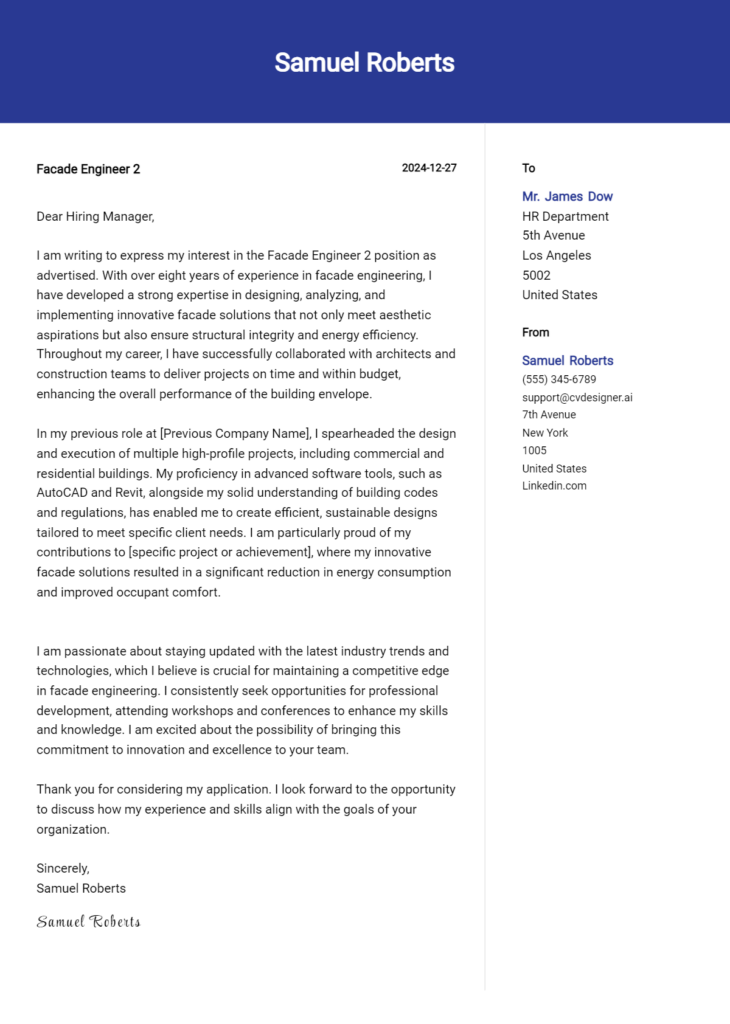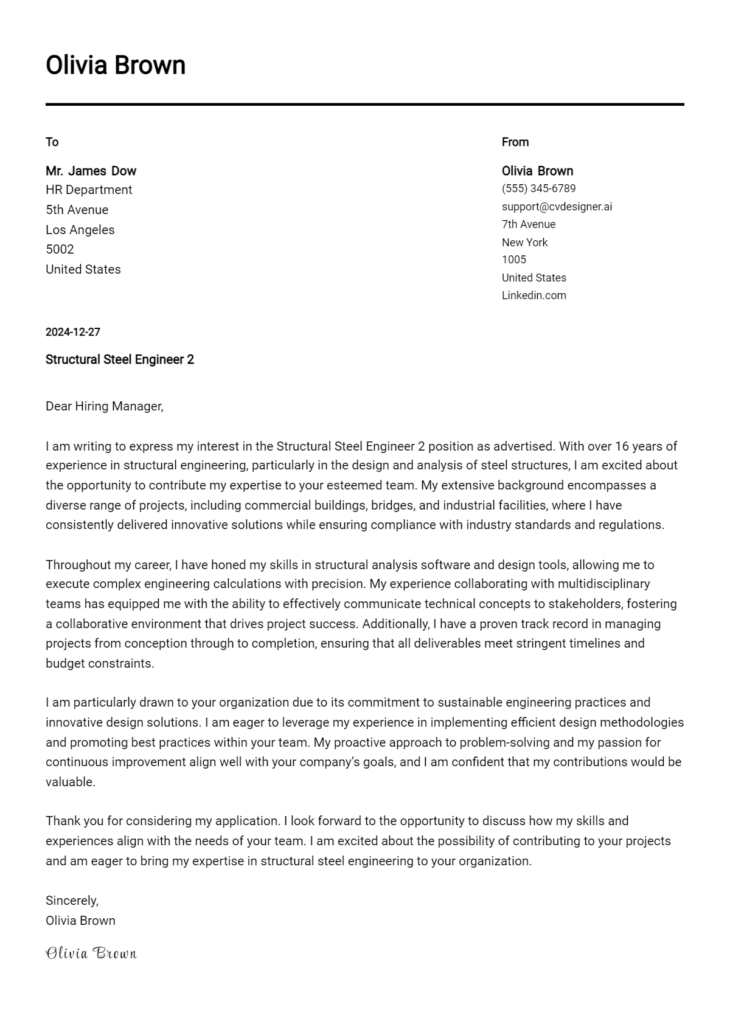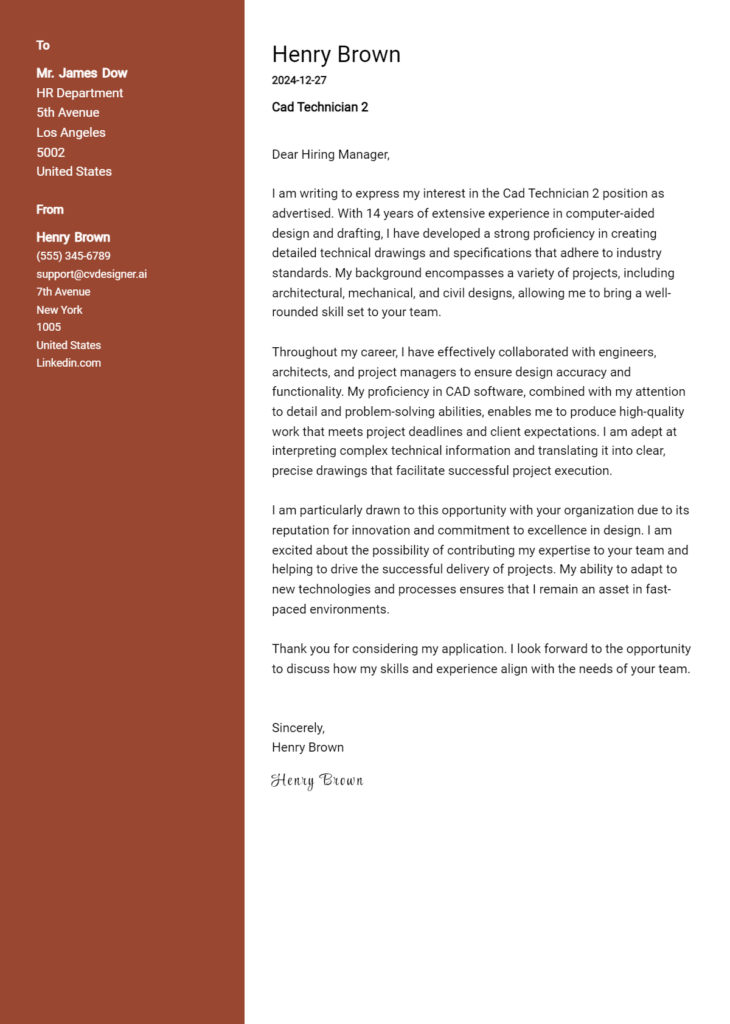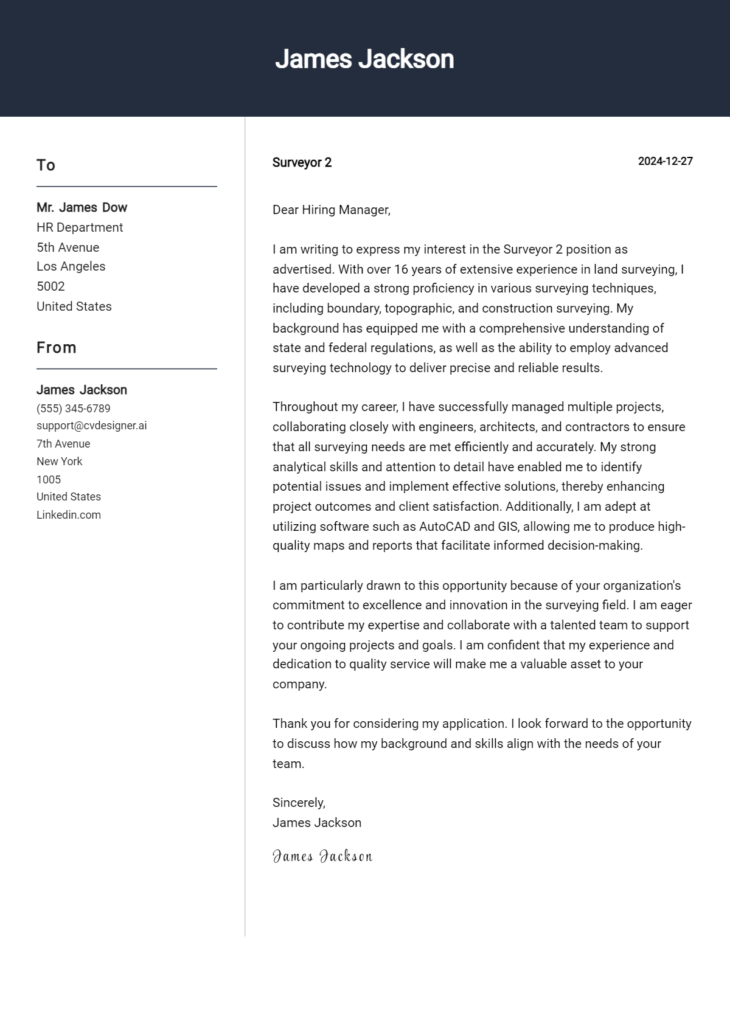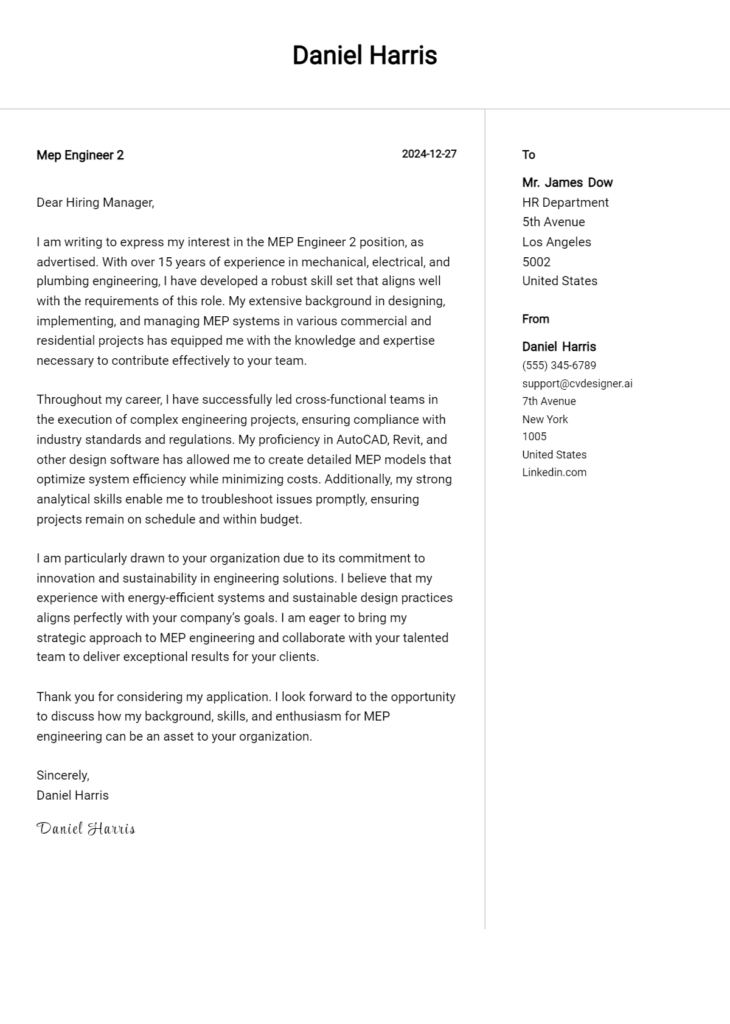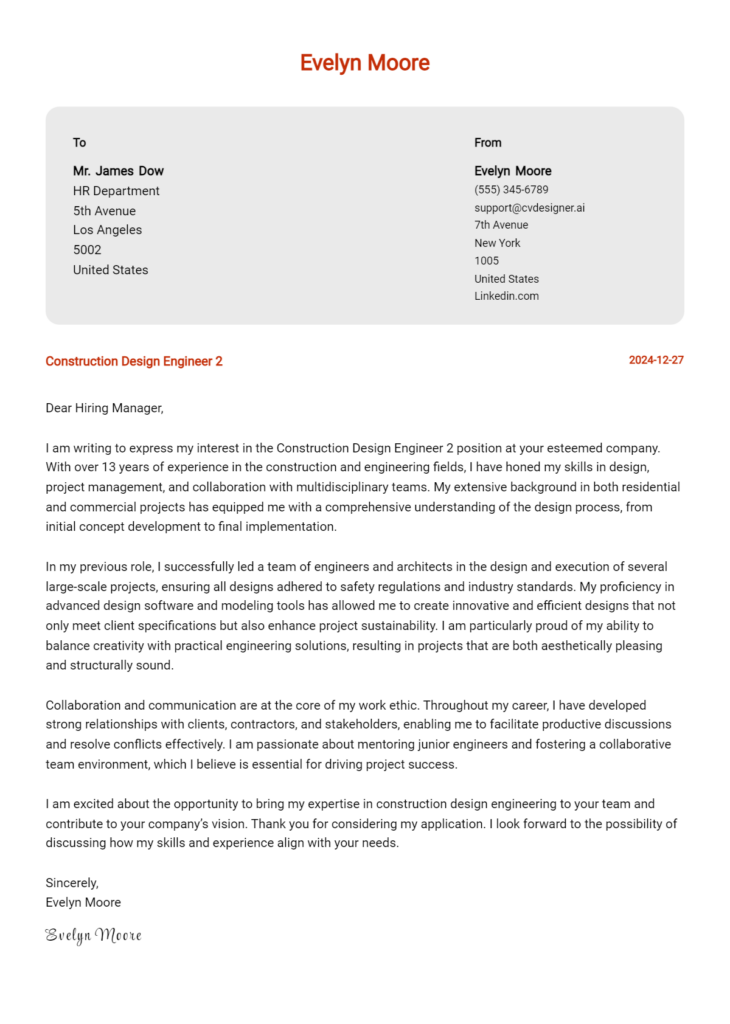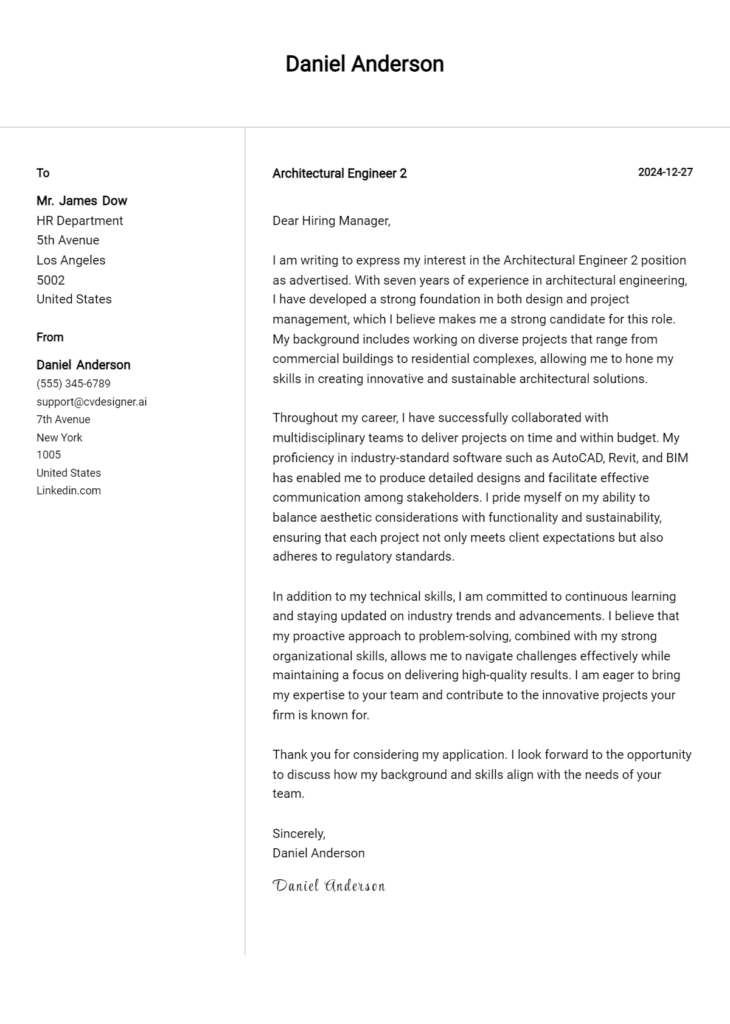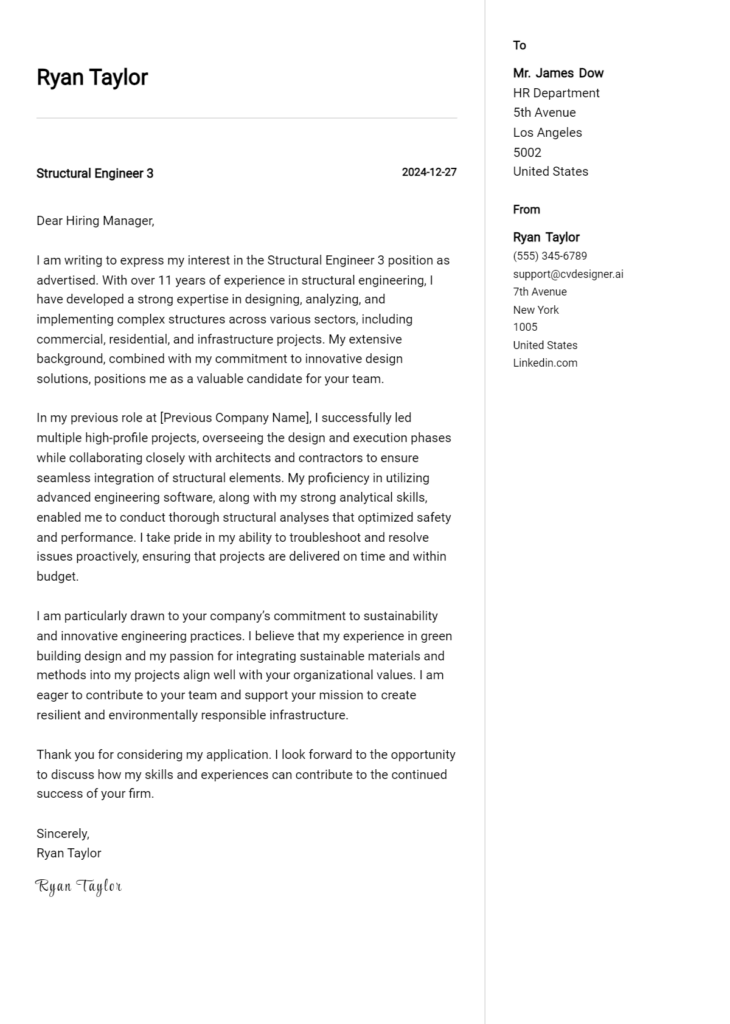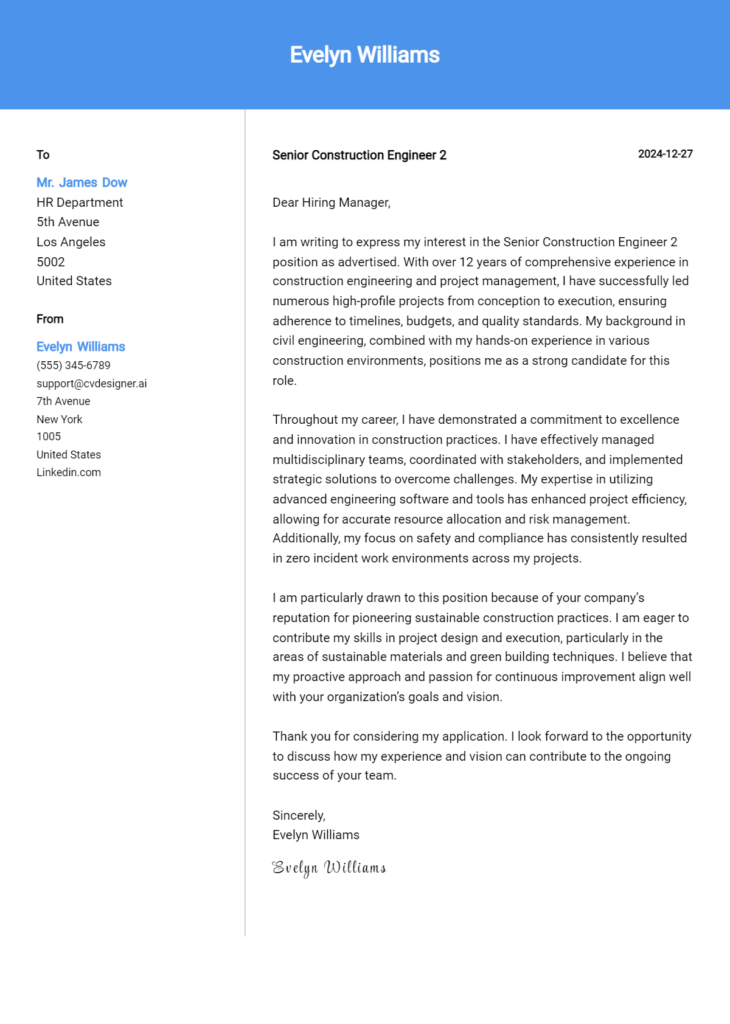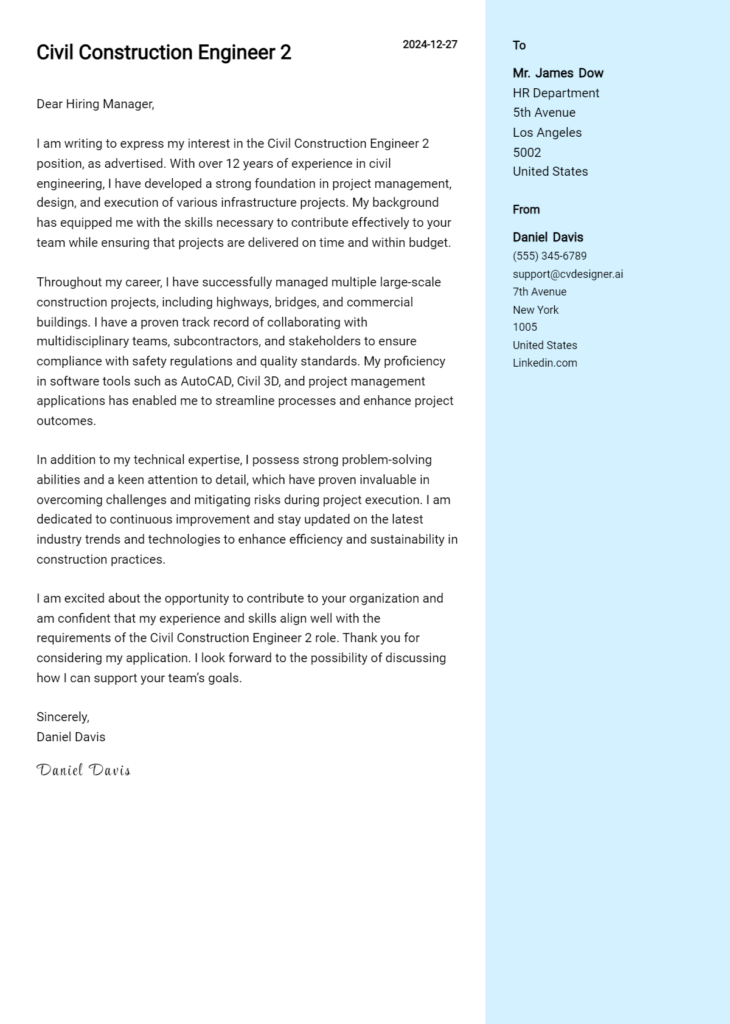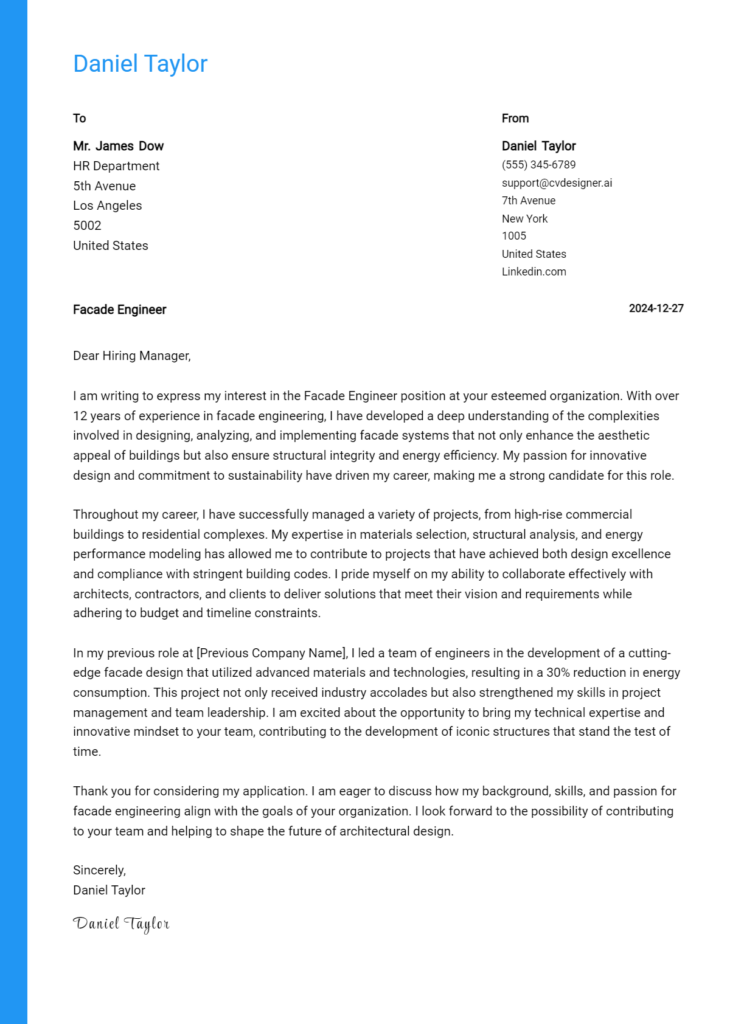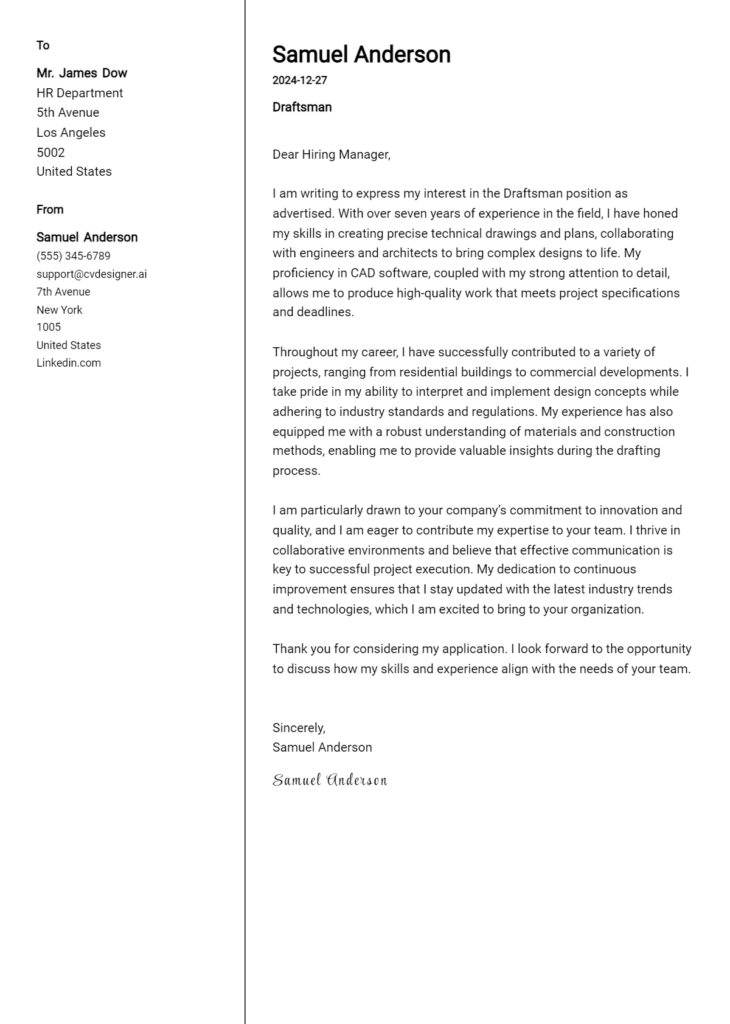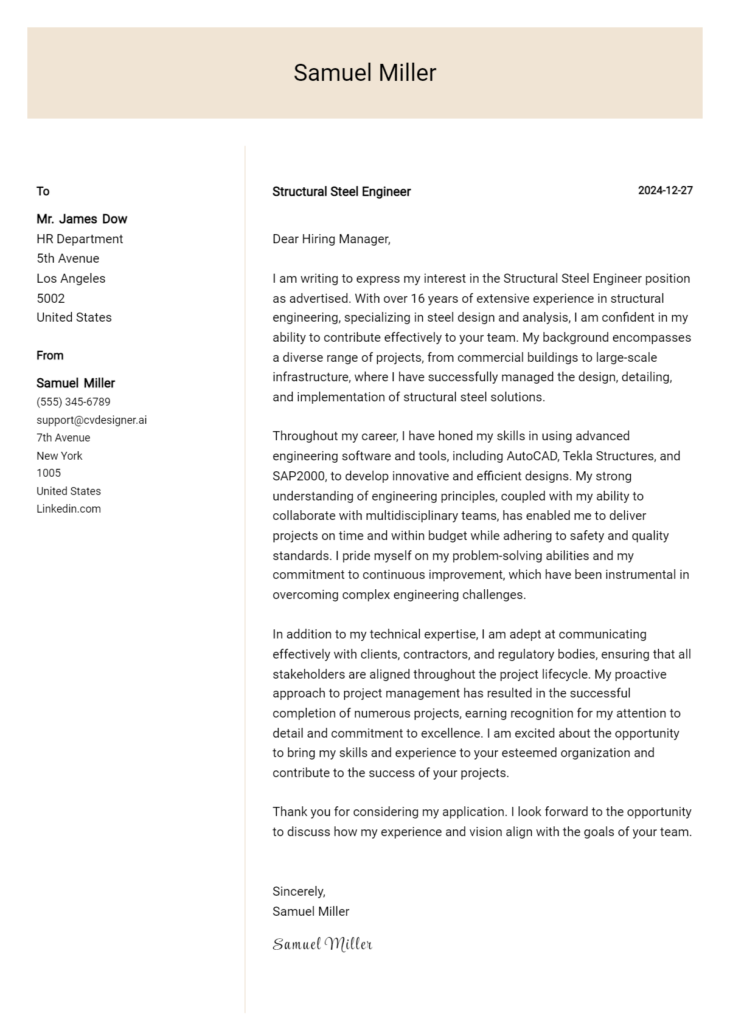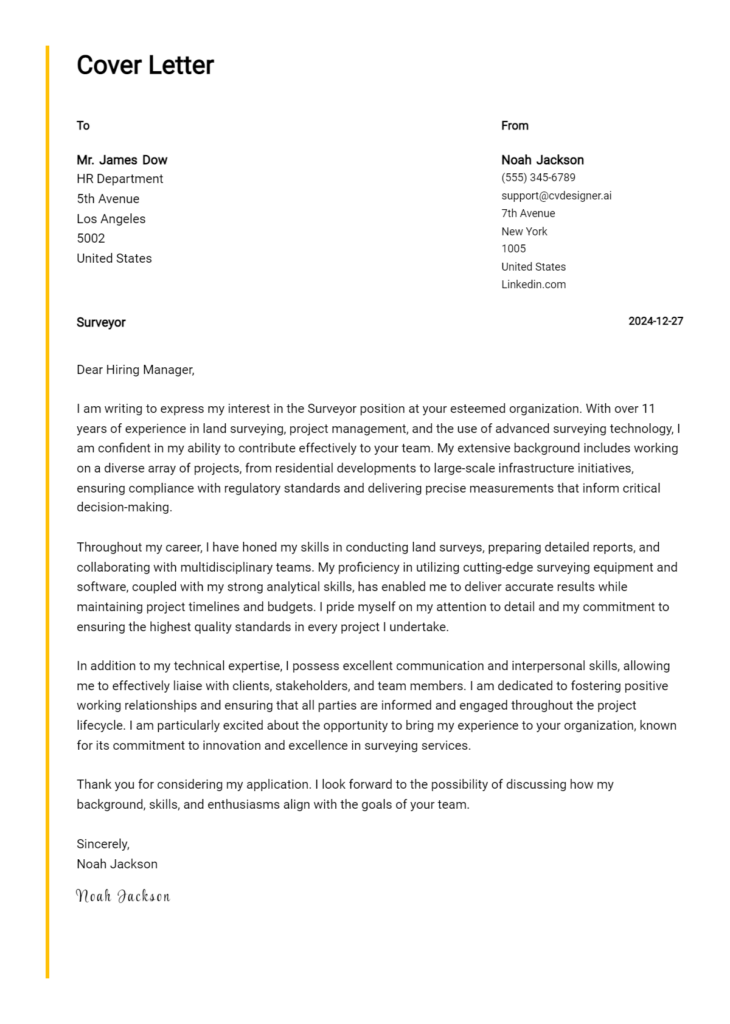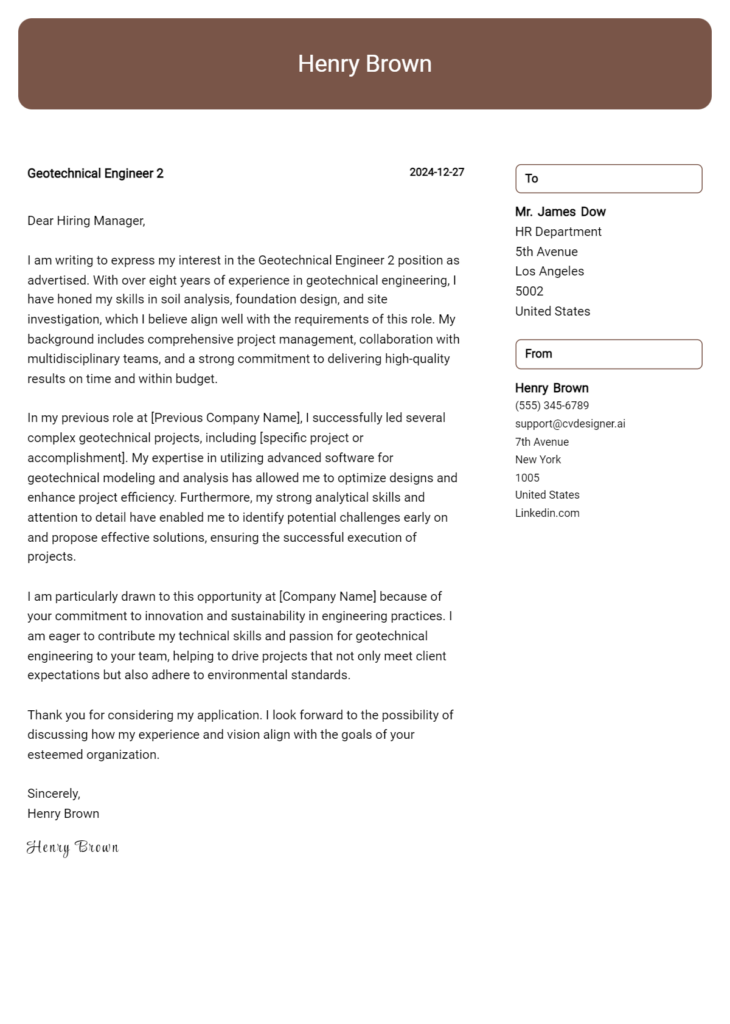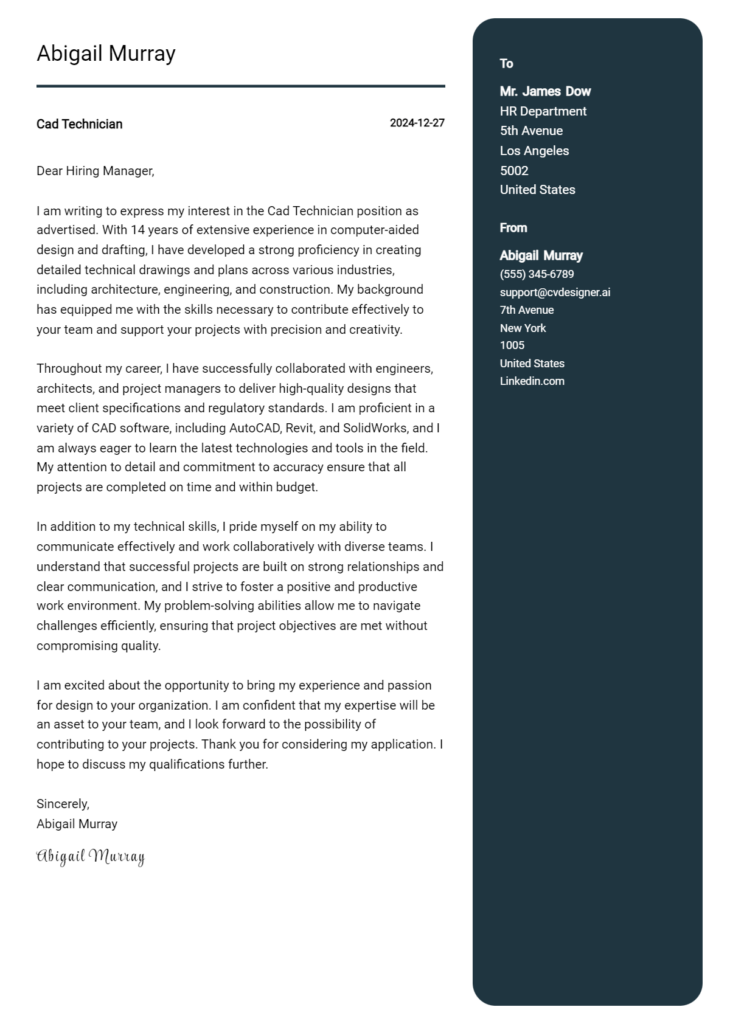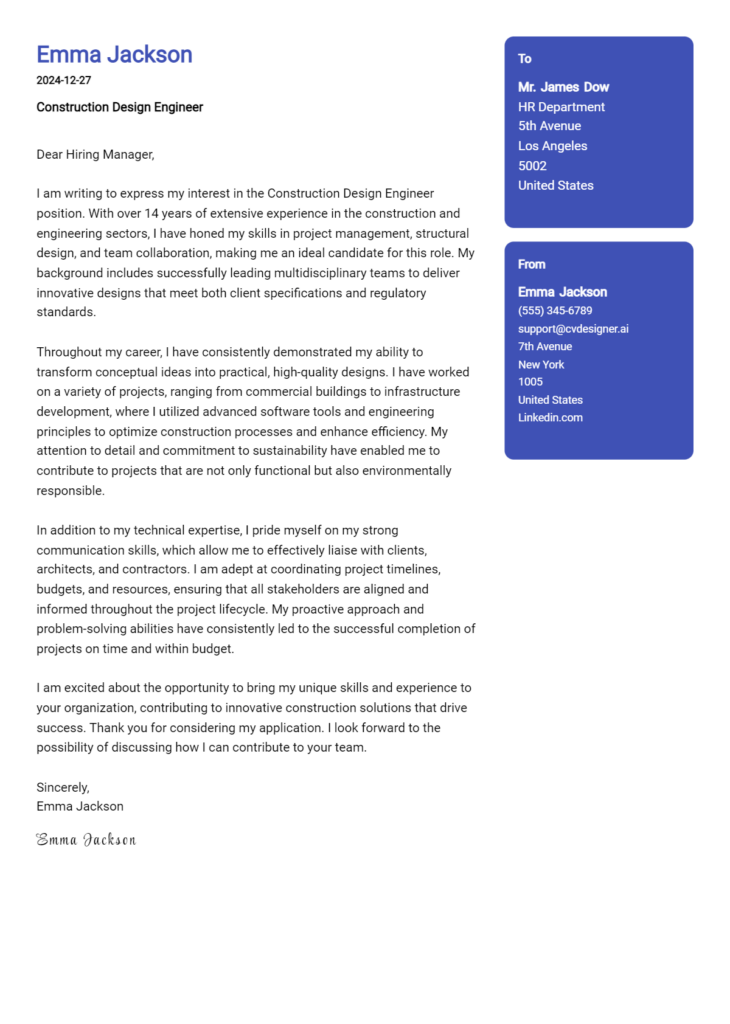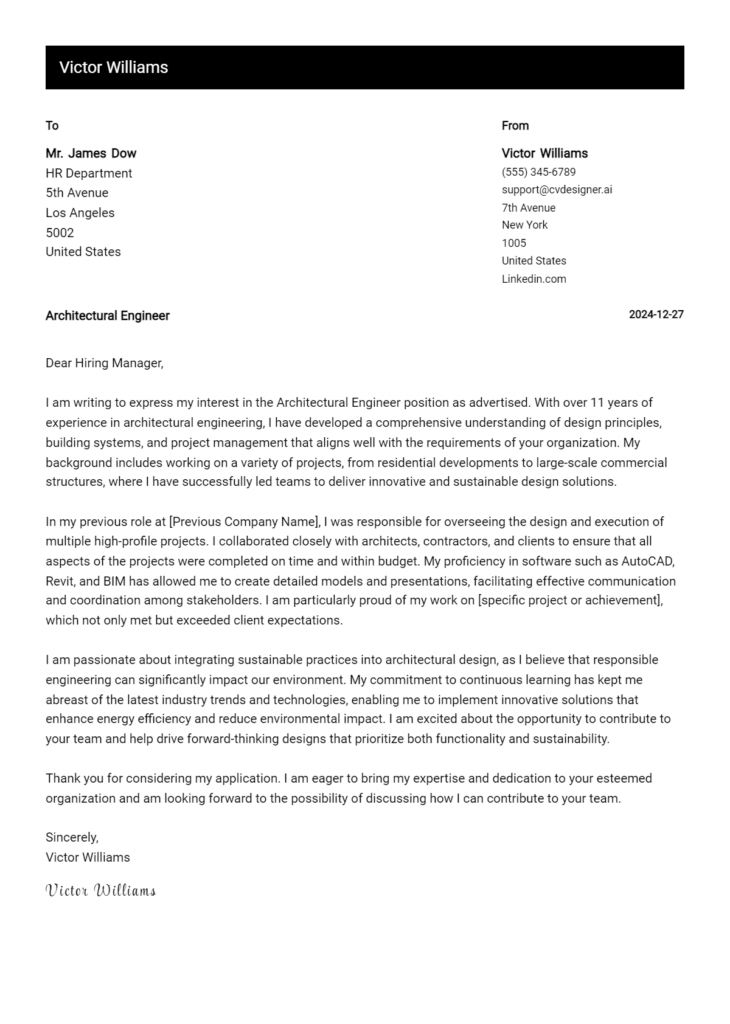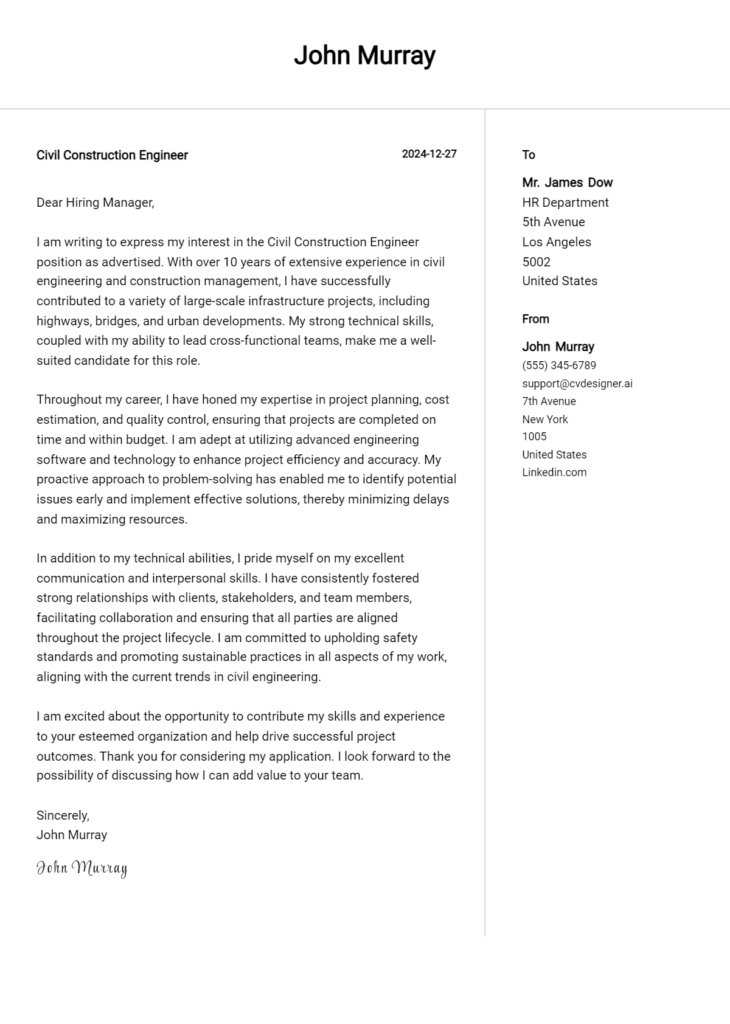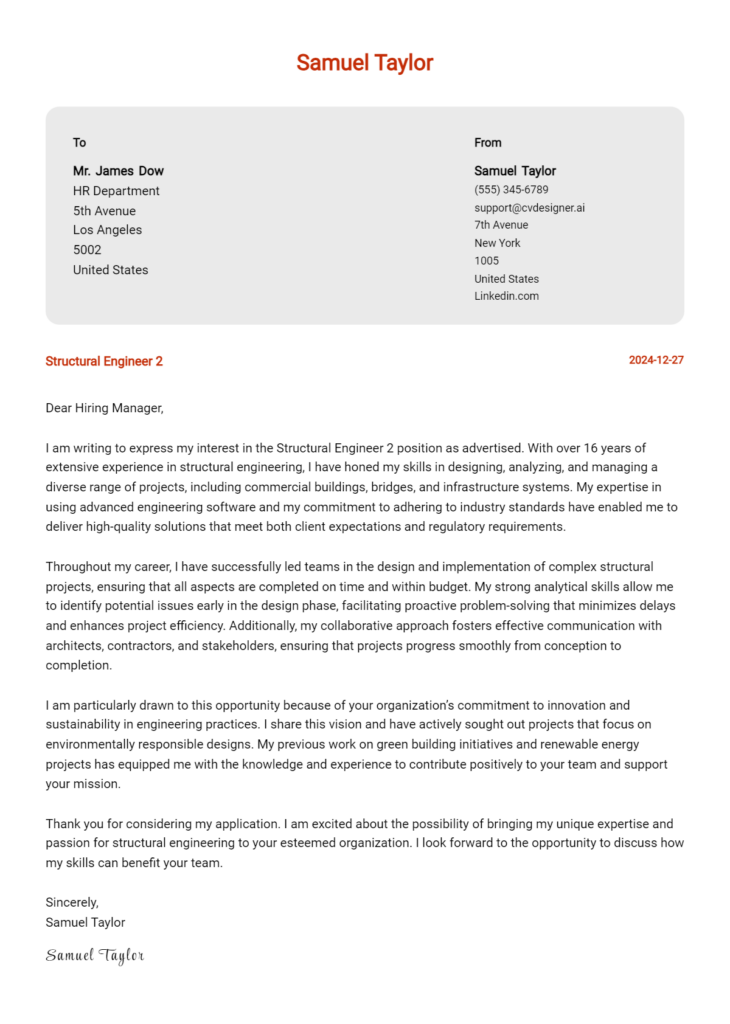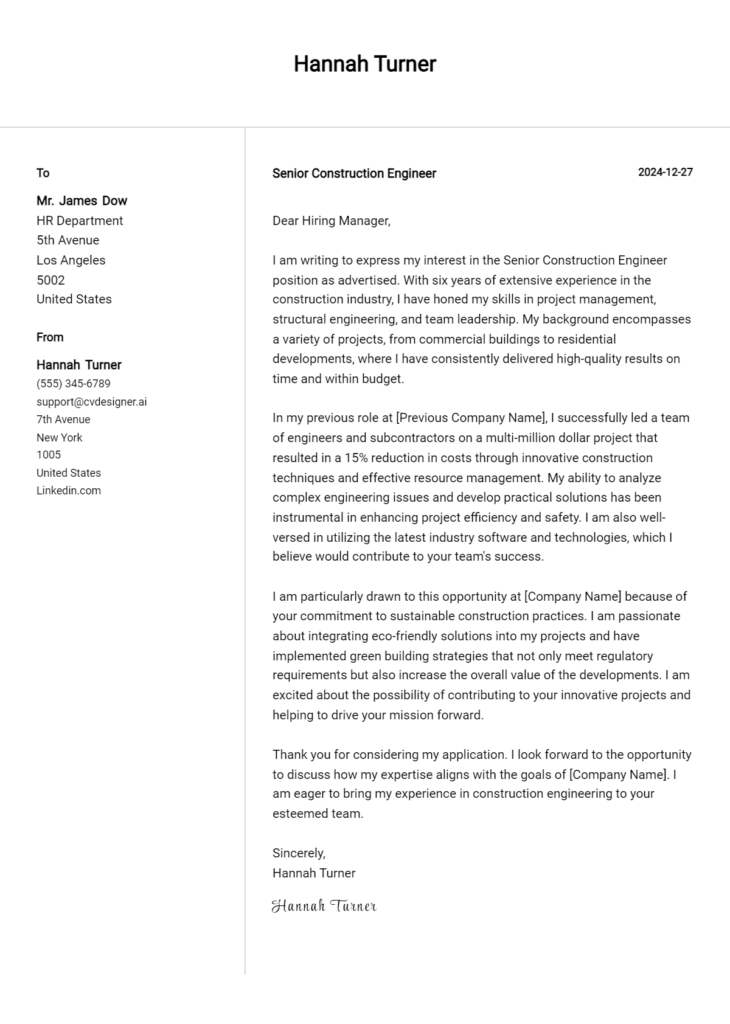Reinforcement Engineer Cover Letter Examples
Explore additional Reinforcement Engineer cover letter samples and guides and see what works for your level of experience or role.
How to Format a Reinforcement Engineer Cover Letter?
Crafting an effective cover letter is essential for a Reinforcement Engineer, as it serves as your first impression to potential employers. The format and presentation of your cover letter reflect your engineering mindset, showcasing your ability to communicate complex ideas clearly and concisely. A well-structured cover letter not only highlights your technical expertise but also demonstrates your attention to detail, a critical skill in engineering projects.
In this guide, we will outline how to format your cover letter effectively, providing insights and examples tailored to the Reinforcement Engineering field.
We will focus on the essential components of a professional cover letter, including:
- Cover Letter Header
- Cover Letter Greeting
- Cover Letter Introduction
- Cover Letter Body
- Cover Letter Closing
Each section is crucial in emphasizing your qualifications and professionalism. Let’s break down each part and explore how to make your Reinforcement Engineer cover letter stand out.
Importance of a Cover Letter Header for a Reinforcement Engineer
The header of a cover letter is a crucial component that sets the tone for your application as a Reinforcement Engineer. It serves as the first point of contact and should convey professionalism and clarity. A well-structured header includes your contact information, the date, and the recipient's details, allowing potential employers to easily identify and reach you. A clear and organized header not only showcases your attention to detail but also reflects your understanding of professional communication standards.
Here are examples of a strong and weak cover letter header for a Reinforcement Engineer:
Strong Example
John Doe 123 Engineering Lane Cityville, ST 12345 (123) 456-7890 john.doe@email.com October 15, 2023 Hiring Manager XYZ Construction Company 456 Building Blvd Cityville, ST 67890
Weak Example
jdoe@email.com XYZ Construction Company 10/15/23
The Importance of a Strong Cover Letter Greeting for a Reinforcement Engineer
The greeting of a cover letter is crucial as it sets the tone for the rest of the document. A well-crafted greeting demonstrates professionalism and establishes a personal connection with the hiring manager. By addressing the recipient directly, you show that you have taken the time to research and tailor your application, which can make a positive impression. Avoiding generic greetings like "To Whom It May Concern" is essential; instead, strive to find the hiring manager's name to create a more engaging and personalized introduction. If necessary, utilize resources such as the company's website or LinkedIn to uncover the name of the appropriate contact.
Strong Greeting Example
Dear Mr. Smith,
Weak Greeting Example
To Whom It May Concern,
Importance of a Well-Crafted Cover Letter Introduction for a Reinforcement Engineer
A well-crafted cover letter introduction is crucial for a Reinforcement Engineer as it serves as the first impression to the hiring manager. This introduction should not only captivate attention but also convey the candidate's enthusiasm for the role. It should succinctly highlight relevant skills or noteworthy achievements that demonstrate the candidate’s qualifications. A strong introduction sets the tone for the rest of the cover letter, making it essential for standing out in a competitive job market. Below are examples of strong and weak cover letter introductions for a Reinforcement Engineer position.
Strong Example
Dear [Hiring Manager's Name], As a passionate Reinforcement Engineer with over five years of experience in designing and implementing innovative reinforcement strategies for high-profile infrastructure projects, I was thrilled to discover the opening at [Company Name]. My expertise in utilizing advanced materials and techniques, combined with my successful track record of reducing project costs by 20% while ensuring safety and compliance, makes me a perfect fit for your team. I am eager to bring my skills in structural analysis and problem-solving to contribute to [Company Name]'s mission of delivering exceptional engineering solutions.
Weak Example
To Whom It May Concern, I am applying for the Reinforcement Engineer position. I have some experience in engineering and am interested in this job. I think I could do well because I have worked on a few projects. I hope to hear back soon.
Cover Letter Body for a Reinforcement Engineer
The body of a cover letter for a Reinforcement Engineer serves as a critical platform for candidates to articulate their qualifications, experiences, and potential contributions to the prospective employer. In this section, candidates should aim to weave in relevant skills such as proficiency in structural analysis, familiarity with design software, and knowledge of building codes and regulations. Furthermore, it’s essential to highlight specific projects or accomplishments that demonstrate technical expertise and problem-solving abilities, thereby showcasing the value the candidate can bring to the company.
Strong Example
I am excited to apply for the Reinforcement Engineer position at XYZ Company. With over five years of experience in the field, I successfully led the reinforcement design for a high-rise commercial building in downtown, where I implemented innovative techniques that reduced material costs by 15% while ensuring compliance with all safety regulations. Additionally, my role in the retrofitting project for the historic bridge not only enhanced its load capacity but also preserved its structural integrity, earning commendation from the city council. I am confident that my proven track record in optimizing structural designs and my commitment to sustainable engineering will make a significant impact at XYZ Company.
Weak Example
I would like to apply for the job of Reinforcement Engineer. I have worked in engineering for a few years, and I know how to do some things. I think I can help your company. I once worked on a project where I did some reinforcement work, but I don’t remember the details. I am looking for a job where I can learn more and grow.
Importance of the Cover Letter Closing for a Reinforcement Engineer
The closing paragraph of a cover letter is crucial as it serves to summarize your qualifications, reiterate your enthusiasm for the role, and encourage the hiring manager to take the next steps, such as reviewing your resume or scheduling an interview. A strong closing leaves a lasting impression and reinforces your suitability for the position, while a weak closing may fail to inspire the desired action or convey your genuine interest in the opportunity.
Strong Example
Thank you for considering my application for the Reinforcement Engineer position at [Company Name]. With my extensive experience in structural analysis and design, coupled with my passion for innovative engineering solutions, I am excited about the opportunity to contribute to your team. I look forward to the possibility of discussing how my skills align with your needs and would be eager to provide further insights during an interview. Please find my resume attached for your review.
Weak Example
I hope you like my application for the Reinforcement Engineer job. I think I have some good skills. Let me know if you want to talk, but I understand if you don’t. My resume is attached.
When applying for a position as a Reinforcement Engineer, a well-crafted cover letter is crucial to making a strong impression. This document not only serves as an introduction but also provides an opportunity to showcase your technical skills, problem-solving abilities, understanding of the Software Development Life Cycle (SDLC), teamwork experience, and passion for continuous learning. Here are some tips to help you create an effective cover letter that stands out from the competition.
Tips for Crafting an Effective Cover Letter for Reinforcement Engineers
Highlight Technical Skills
Clearly outline your technical expertise relevant to reinforcement engineering. Mention specific programming languages, tools, and technologies you are proficient in, such as Python, Java, or C++. Providing examples of how you've applied these skills in past projects will help demonstrate your capability and readiness for the role.Demonstrate Problem-Solving Abilities
Reinforcement Engineers often face complex challenges. Use your cover letter to describe situations where you successfully identified problems, developed solutions, and executed them effectively. This not only showcases your analytical skills but also highlights your ability to think critically under pressure.Showcase SDLC Knowledge
Employers value candidates who understand the Software Development Life Cycle. Discuss your experience with different phases of the SDLC, such as planning, design, implementation, testing, and maintenance. Relate specific experiences where your knowledge of the SDLC helped improve project outcomes or team efficiency.Emphasize Teamwork and Collaboration
Reinforcement Engineers frequently work in teams. Illustrate your collaborative skills by providing examples of successful teamwork experiences. Mention how you contributed to group projects, communicated effectively with team members, and resolved conflicts to achieve common goals, showcasing your ability to work harmoniously in a team setting.Express a Passion for Continuous Learning
The field of reinforcement engineering is ever-evolving, and a commitment to continuous learning is essential. Share any recent courses, certifications, or workshops you have undertaken to enhance your skills. This will not only demonstrate your dedication to personal and professional development but also your willingness to stay current with industry trends.
By incorporating these tips into your cover letter, you can create a compelling narrative that highlights your qualifications as a Reinforcement Engineer. For additional assistance, consider using cover letter templates to structure your letter effectively or try a cover letter builder to streamline the writing process.
Common Mistakes to Avoid in a Reinforcement Engineer Cover Letter
Crafting a compelling cover letter is essential for standing out in the competitive field of reinforcement engineering. Avoiding common mistakes can significantly enhance your chance of making a positive impression. Here are some pitfalls to watch out for:
Generic Content: Many candidates use a one-size-fits-all approach. To avoid this, tailor your letter to the specific job you're applying for, highlighting relevant experiences and skills.
Ignoring Formatting Guidelines: Poor formatting can detract from your message. Follow proper cover letter format to ensure clarity and professionalism.
Lack of Specificity: Vague statements can weaken your application. Instead, provide concrete examples of your past projects or achievements that relate to the role of a reinforcement engineer.
Overly Long or Short Letters: Striking the right balance is key. Aim for a concise letter—typically one page—that effectively communicates your qualifications without overwhelming the reader.
Neglecting Proofreading: Spelling and grammatical errors can undermine your credibility. Always proofread your letter multiple times or seek feedback from a trusted colleague.
Failing to Demonstrate Enthusiasm: A lack of enthusiasm can turn off potential employers. Convey your passion for the field and the specific role in your letter to create a connection.
Not Including a Call to Action: Many forget to include a concluding statement that encourages the reader to take the next step. Politely express your desire for an interview and thank them for considering your application.
By addressing these common mistakes, you can create a compelling cover letter that stands out. For additional guidance, check out some cover letter examples to inspire your writing.
Cover Letter FAQs for Reinforcement Engineer
What should I include in my cover letter as a Reinforcement Engineer?
In your cover letter, highlight your relevant experience, technical skills, and educational background in civil or structural engineering. Emphasize specific projects where you successfully implemented reinforcement techniques, such as using rebar or prestressed concrete. Mention familiarity with design codes and software tools like AutoCAD or SAP2000. Additionally, showcase your problem-solving abilities and teamwork experience, as collaboration with architects and construction teams is essential. Conclude by expressing your enthusiasm for the role and how your skills align with the company’s mission and values.
How do I tailor my cover letter for a specific job application?
To tailor your cover letter, start by carefully reviewing the job description for key responsibilities and required skills. Identify the qualifications you possess that match these requirements and incorporate them into your letter. Use specific examples from your previous work experiences that demonstrate your expertise in reinforcement engineering, such as successful project outcomes or innovative solutions. Address the hiring manager by name if possible, and express a genuine interest in the company’s projects or values. This personalized approach shows that you are invested in the opportunity.
Should I use technical jargon in my cover letter?
While it’s important to communicate your technical expertise as a Reinforcement Engineer, be mindful of your audience. If the hiring manager is likely to have a technical background, using industry-specific terminology can showcase your knowledge and credibility. However, avoid excessive jargon that may confuse non-technical readers. Aim for a balance: clearly explain your skills and experiences while ensuring that the language remains accessible. This approach demonstrates your ability to communicate effectively with both technical and non-technical stakeholders.
How can I make my cover letter stand out?
To make your cover letter stand out, start with a compelling opening sentence that grabs attention. Use storytelling to describe a significant challenge you faced in a reinforcement engineering project and how you overcame it. Quantify your accomplishments by including metrics, such as cost savings, project timelines, or performance improvements. Additionally, express genuine enthusiasm for the specific role and the company’s initiatives. A well-organized layout, professional tone, and careful proofreading will also enhance readability, ensuring that your cover letter leaves a positive impression.
Build your Cover Letter in minutes
Use an AI-powered cover letter builder and have your letter done in 5 minutes. Just select your template and our software will guide you through the process.

